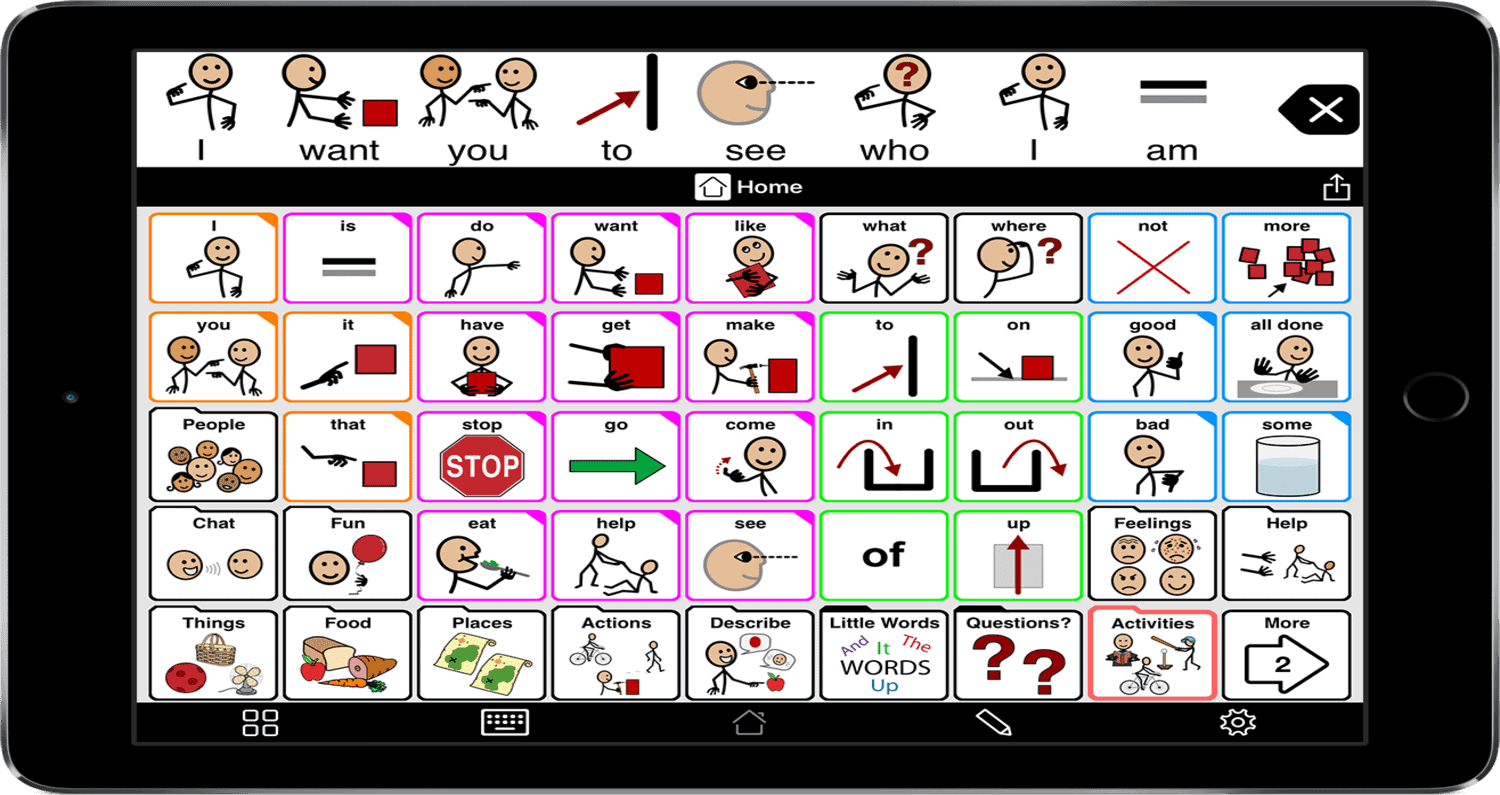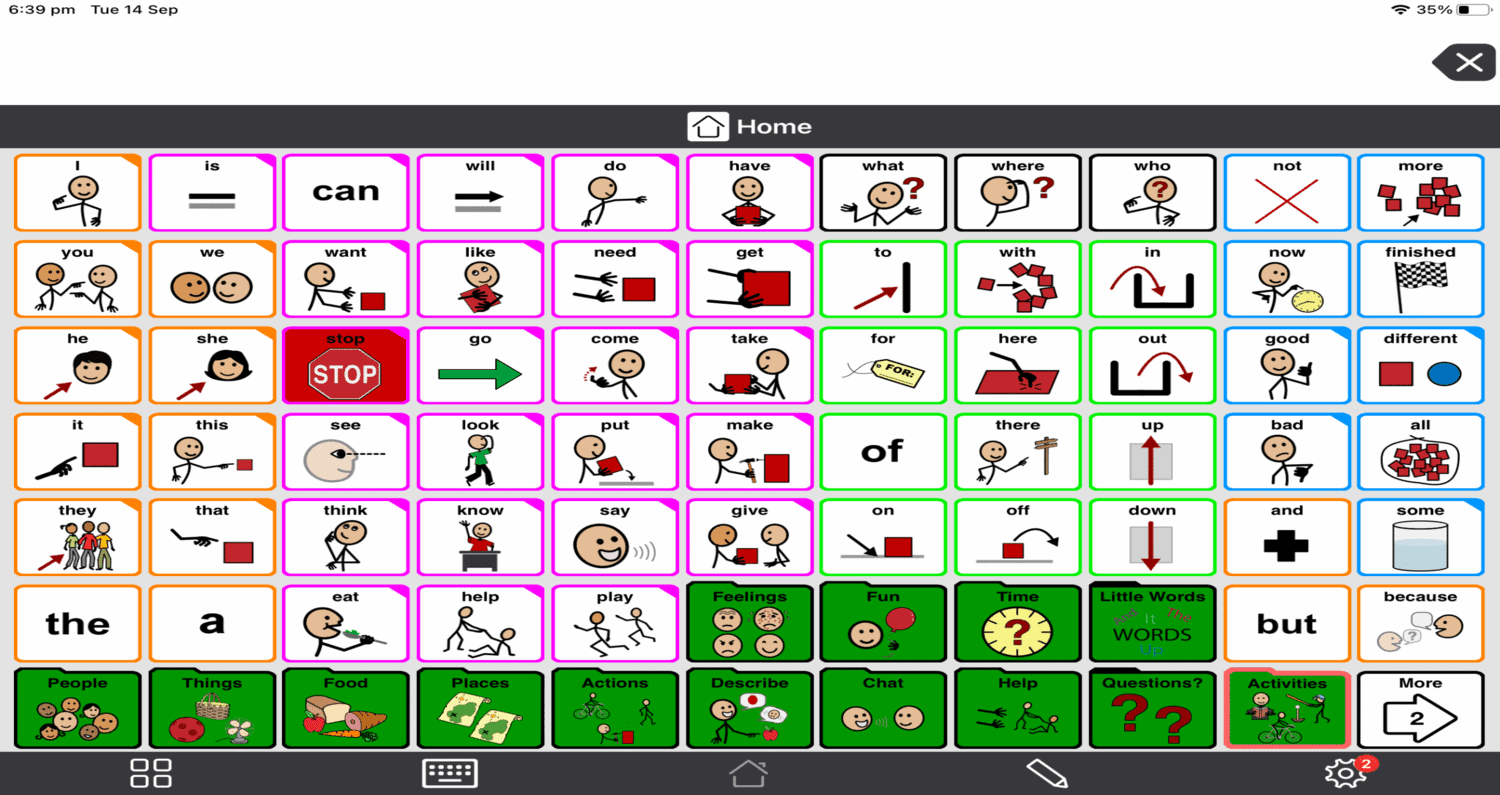Are you looking for free communication apps for special needs? Discover 5 Free Communication Apps Tailored for Special Needs and how they can enhance communication skills.
The top accessible assistive technology apps are JABtalk for speech challenges, Visuals2Go for visuals, Proloquo2Go for speech difficulties, Seeing AI for the visually impaired, and Read&Write for reading difficulties. To know more, keep on reading.
Communication apps are vital in empowering individuals with special needs to express themselves effectively. With the advancement of technology, these apps have become instrumental in overcoming speech and language challenges, enabling improved communication, social interaction, and independence for individuals who previously faced limitations in expressing their thoughts and emotions. To know more about free communication apps for special needs, read on.
Table of Contents
What is Assistive Technology?
Assistive technology is tools, gadgets, and software that help people with impairments complete activities, increase their independence, and generally live better lives. Assistive technology is essential for helping and assisting those with physical, sensory, cognitive, or communication difficulties.
Augmentative and Alternative Communication (AAC) is a crucial aspect of assistive technology. AAC involves using communication tools and strategies to supplement or replace traditional speech for individuals with difficulty speaking or understanding spoken language. AAC can include picture-based communication boards, electronic devices with speech output, and apps on tablets or smartphones. 
The benefits of such communication tablet for special needs are immense. It enables people with special needs to communicate their needs, wants, and feelings, fostering social connection and successful communication. AAC also improves independence by empowering users to participate in various activities, make decisions, and interact with their surroundings more actively. Additionally, AAC can increase self-esteem and confidence since it allows people to speak for themselves and be heard.
Overall, assistive technology, including AAC, opens up new avenues for individuals with special needs, enabling them to communicate effectively, participate more fully in society, and achieve their potential.
See Also: What Is Draw Over Other Apps? An In-Depth Explanation
Benefits of Communication Apps for Special Needs
Communication apps provide numerous benefits for individuals with special needs. Firstly, they promote independence and self-expression by offering alternative means of communication. These apps enable individuals with difficulty with traditional speech to express their thoughts, needs, and emotions effectively, giving them a sense of autonomy and empowerment.
Furthermore, communication apps enhance communication opportunities by offering a variety of tools and methods for effective interaction. These apps often offer customizable features such as symbol-based communication boards, text-to-speech functionality, or even eye-tracking technology, enabling individuals to communicate in ways that best suit their abilities and preferences. 
Furthermore, these apps enhance social interactions and help build relationships. By improving communication skills, individuals with special needs can engage more actively in conversations, participate in social activities, and establish meaningful connections with others. Communication apps or apps for assistive technology also facilitate social inclusion by bridging communication gaps and promoting understanding and empathy among peers.
Additionally, communication apps can support language development and cognitive skills. They often offer visual cues, vocabulary expansion, and interactive features, which can aid in language acquisition and comprehension.
Communication apps for special needs offer a range of benefits, including promoting independence, expanding communication opportunities, enhancing social interactions, and supporting overall language and cognitive development. Hence, These apps are valuable tools for individuals with special needs to communicate effectively and engage meaningfully with the world around them.
See Also: 10 Best Spy Listening Apps For IPhone | Ultimate List 2024
Top Free Communication Apps for Special Needs
These top free communication apps for special needs provide valuable tools and features to support individuals with special needs.
JABtalk
JABtalk is one of the fantastic assistive technology apps designed to assist individuals with speech challenges. It offers a user-friendly interface and customizable communication boards with symbols and pictures. This allows users to express themselves effectively, even if they struggle with traditional speech. The app promotes independence and self-expression, empowering individuals to communicate their thoughts, needs, and emotions. 
Users appreciate the simplicity of JABtalk apps for nonverbal communication and find it easy to navigate, making it accessible for individuals of all ages and abilities. By using JABtalk, individuals with special needs can enhance their communication skills and feel more confident in expressing themselves.
Visuals2Go
Visuals2Go is a powerful smartapps for special needs that recognizes the importance of visuals in communication. It provides various visual supports such as schedules, social stories, and visual timers. These visual tools help individuals with special needs understand and navigate their daily routines effectively. Individuals can better comprehend instructions, routines, and social situations by incorporating visuals.
Positive user feedback praised the app’s intuitive user interface (UI) and advantageous communication effects. Furthermore, Visuals2Go promotes understanding, reduces anxiety, and enhances independence, allowing people to participate more actively in their daily lives.
Proloquo2Go
Proloquo2Go is one of the comprehensive apps for assistive technology specifically designed for individuals with speech difficulties. It offers an extensive vocabulary and customizable features to personalize communication. The app supports various communication methods, including symbols, pictures, and text-to-speech functionality.
Proloquo2Go is a paid app, but its robust features and extensive support make it a valuable tool for individuals with special needs. It provides a comprehensive solution for enhancing communication skills and promoting independence. Pricing details can be obtained through the app store or the developer’s website.
Seeing AI
Seeing AI is an innovative app that utilizes Artificial Intelligence (AI) to enhance communication for visually impaired individuals. The app provides text recognition, object recognition, and document reading. Using the device’s camera, Seeing AI can identify and describe objects, read text aloud, and even recognize people’s faces.
Users have praised the accuracy and usefulness of Seeing AI in their daily lives. In addition, The app empowers visually impaired individuals to access visual information, navigate their surroundings, and engage in conversations more effectively. Seeing AI is free to download and is compatible with iOS devices.
See Also: 7 Best Free AI Sites For The Future
Read&Write
Read&Write is an exceptional app that offers text-to-speech capabilities, supporting individuals with reading difficulties. Hence, It enables users to have written text read aloud, helping improve reading comprehension and accessibility. In addition to text-to-speech, Read&Write provides various accessibility tools such as highlighting, dictionary support, and speech feedback. 
These features make reading and understanding written content more accessible for individuals with special needs. Read&Write emphasizes the importance of inclusive education and inclusive communication for all. The communication tablet for special needs is free with optional in-app purchases and compatible with various devices and platforms.
Tips for Using Assistive Technology Devices
Maximizing the benefits of apps for nonverbal communication apps: 
- Take time to explore: Learn about the attributes and potential of the assistive technology device. Try several choices and settings to see which suits you or the system user the best.
- Seek guidance: Consult with professionals, therapists, or experts specializing in assistive technology. They can provide valuable insights and advice on optimizing these devices’ use for specific needs.
- Practice regularly: Like any skill, using assistive technology devices requires practice. Regular use can improve proficiency and maximize the benefits of the device.
- Stay updated: Watch for software updates or new features that may enhance the device’s functionality. Updated versions often include improvements and additional tools to support communication and independence further.
Customizing settings for individual needs:
- Personalize the device: Most assistive technology devices allow for customization. Therefore, Adjust settings such as language preference, communication speed, or display options to cater to individual needs and preferences.
- Consider sensory preferences: Some individuals may have sensory sensitivities. Hence, Customize the device’s visual and auditory features, such as font size, color contrast, or volume levels, to create a comfortable and accessible user experience.
- Optimize accessibility: Explore accessibility options like switch compatibility, alternative input methods, or gesture-based controls to accommodate specific physical or cognitive abilities.
- Regularly reassess needs: As needs may change over time, periodically review and adjust the device’s settings to ensure it continues to meet the individual’s evolving requirements.
See Also: 14 Best Text-Speech Software With Natural Voices
Real-life Success Stories
The impact of smartapps for special needs on the lives of individuals with special needs has been transformative. Additionally, Countless success stories highlight the positive outcomes experienced by individuals and their caregivers. For example, parents have shared how their nonverbal child, through communication apps like JABtalk or Proloquo2Go, has finally found their voice, expressing their needs, desires, and thoughts. This newfound ability has improved their communication skills, self-confidence, and social interactions.
Above all, Caregivers of visually impaired individuals have witnessed the power of apps like Seeing AI as their loved ones gained independence in navigating their environment, identifying objects, and even reading printed text. Further, These apps have opened up new possibilities, enabling individuals to engage more actively in daily activities and build meaningful connections.
Such success tales highlight the radical change that technology has brought about in the daily lives of people with special needs. Indeed, These applications can break down communication barriers, encourage independence, and improve the overall quality of life, giving people the resources they need to succeed.
FAQs
Can children with special needs use these apps?
Absolutely! Many free communication apps tailored for special needs are designed with children in mind. Also, They often feature child-friendly interfaces, vibrant visuals, and engaging activities to encourage participation and learning. Hence, These apps can be utilized in educational and therapeutic settings or as a tool for home-based communication practice.
Do these applications come in a variety of platforms?
Most special needs-specific communication applications are available for Android and iOS (iPhone and iPad) smartphones across numerous platforms. In addition, Many consumers may access multiple well-known apps by downloading them from app stores.
Can these apps be customized to suit individual preferences?
These apps typically offer customization options to adapt to each user's unique needs and preferences. Above all, Users can often personalize the app's interface, choose communication symbols or images, adjust voice settings, and create personalized communication boards or schedules.
Do these applications need to be connected to the internet to work?
Many communication applications function offline, enabling users to access and utilize the app without an online connection; however, certain communication apps may need an internet connection for specialized functions. Thanks to its offline capabilities, individuals may use the program in various settings, including places with poor internet.
Conclusion
The future of special needs assistive technology is promising in overcoming communication barriers and empowering people. Furthermore, To improve communication, increase independence, and enhance the general well-being of people with special needs, caregivers and educators are encouraged to investigate and use various resources, such as communication applications. Therefore, embracing these technologies can create a more inclusive and accessible world for everyone. This article on free communication apps for special needs has provided comprehensive information.


